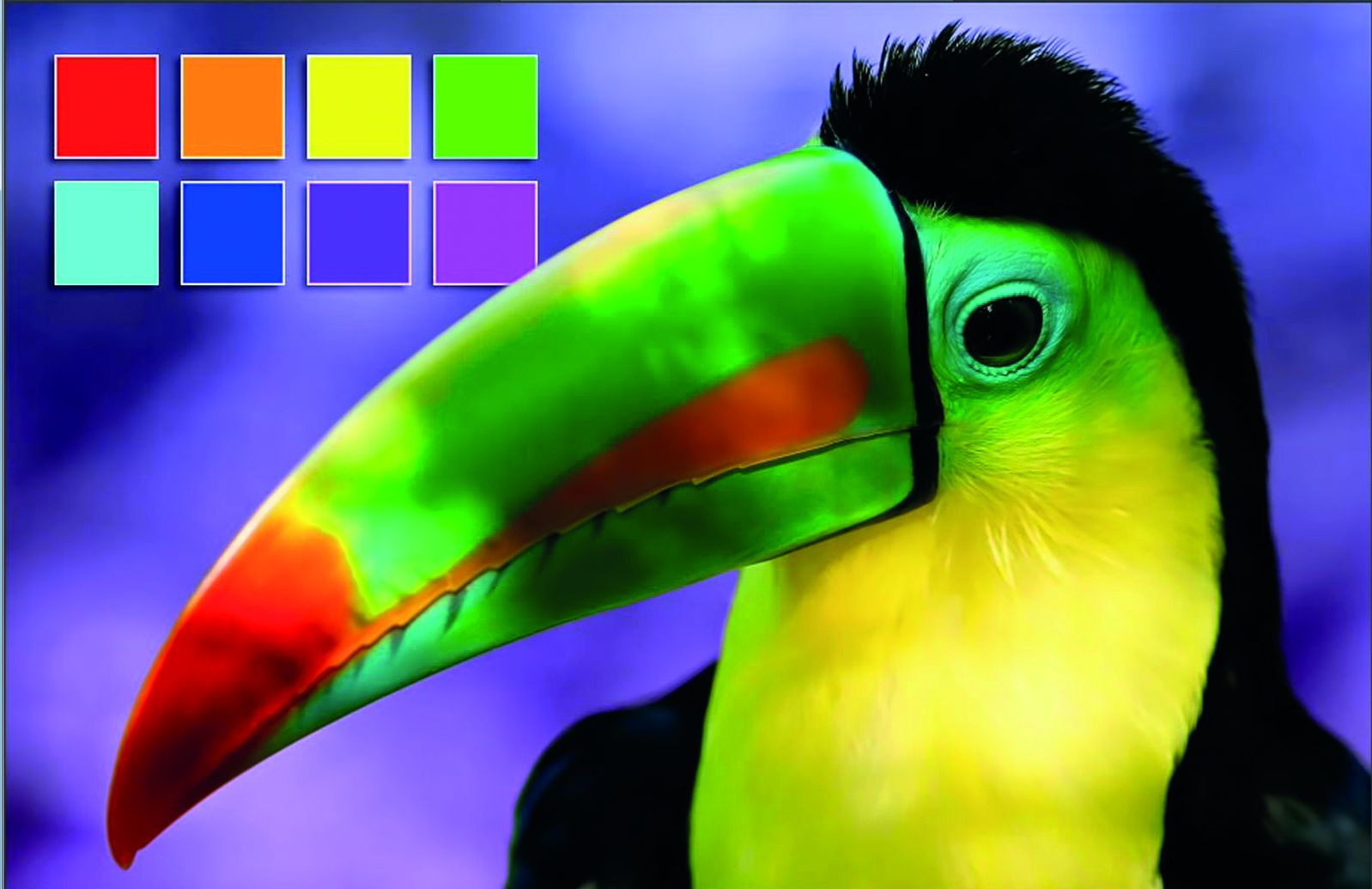- Home
- Photoshop ecosystem
- Discussions
- Re: Problem with saving cmyk images
- Re: Problem with saving cmyk images
Problem with saving cmyk images
Copy link to clipboard
Copied
Hi,
I have a problem with converting from RGB to CMYK. I really hope for your help, because I find nothing on the internet.
When I convert an image from RGB to CMYK, I realize that the colors are changing.
But if I save the CMYK image once as JPG and once as PDS and open the images, the images have different colours, although in both cases it is the same CMYK image. How do I know which colors await me after printing?
Is it normal that the colors differ depending on the storage format ??
The first image is the original image, the second is converted to CMYK and saved as PSD and the third image is the same CMYK image saved as JPG only.
Best regards



Explore related tutorials & articles
Copy link to clipboard
Copied
Much of what you are referring to here involves Color Management which is potentially a massive topic. You may like to review pages such as the following and then post further specific questions...
As for some of your questions, are you embedding color profiles when you are saving your different types of files (look for a check box in the save dialog box)? You generally should do this and if you are not it may explain why your colours are looking different.
Copy link to clipboard
Copied
Yes, color management was invented to deal with precisely this.
If you know absolutely nothing about this, you're at the bottom of a pretty steep hill. The problem with that, is that you really shouldn't be working in CMYK at all without some basic color management understanding. In RGB you can basically get away with "stick to sRGB IEC 61966-2.1, and you'll be fine". But CMYK has some special considerations.
The thing is, RGB and CMYK are just generic color models. Color management deals not in generic color models, but in specific color spaces. A color space is described and defined by an icc profile.
In RGB there is sRGB, Adobe RGB, ProPhoto RGB and so on. These are pretty standardized. In CMYK it's a lot worse, because each CMYK profile describes a particular press/paper/ink combination. Standards for this vary around the world. Commonly used CMYK profiles are e.g. US Web Coated (SWOP) v2, ISO Coated v2 300% (ECI), and so on.
You cannot send files to offset press without knowing the exact CMYK profile used. You get this from the printer. There is no such thing as generic "CMYK".
If you're printing to an inkjet desktop printer, they are not CMYK devices. Don't use CMYK there. They expect RGB data, which are converted into whatever inks are used inside the printer driver.
Now - some color spaces are smaller than others. This is known as the color space gamut. The gamut defines the most saturated color reproducible in that color space. When going from a large color space to a smaller, you may get gamut clipping - some saturated colors are outside the smaller color space, and so get remapped to the nearest (duller) reproducible color.
This is just a basic outline of the things you need to consider. I'm leaving out the details.
Copy link to clipboard
Copied
Hello,
Thank you very much for your detailed answers, michael bullo and D Fosse . Of course I'm basically informed about cmyk and rgb, but my question is not about the difference between rgb and cmyk.
My question is why one and the same cmyk image looks different as psd and jpg.
Copy link to clipboard
Copied
1. Have you checked whether you are consistently embedding the same color profile in your different files (see my first post)?
2. Are you viewing your different files in different software and does that software support a color managed environment?
Copy link to clipboard
Copied
As others have mentioned, this is potentially a rather large discussion. First off, we are talking two different sets of hues so there will be changes (RGB vs CMYK), and second, the RGB color space is probably larger than the CMYK, which means colors will have to shift. Without knowing the precise necessary CMYK profile you might be causing more harm.
I suggest confirming what is necessary and after you convert to CMYK be prepared to make tonal adjustments. Keep in mind that RGB and CMYK are two different animals, so although you can get close, it is impossible to perfectly match.
Copy link to clipboard
Copied
Key point: Do not try to view the CMYK JPEG in any other app. That will mess you up even before colour management is involved.
Copy link to clipboard
Copied
Good point. Very few, if any, consumer-oriented image viewers/web browsers etc have CMYK support at all. Rely on Photoshop for this.
Copy link to clipboard
Copied
https://forums.adobe.com/people/D+Fosse wrote
Good point. Very few, if any, consumer-oriented image viewers/web browsers etc have CMYK support at all. Rely on Photoshop for this.
For the record, both the FastStone image viewer and XNVIew MP have CMYK support, but ACDSee doesn't.
FastStone is not a bad piece of software, and it is now the color managed image viewer I recommend on Windows.
Copy link to clipboard
Copied
I have another thought. I'd welcome more experienced insight... the second shot, described as converted to CMYK and saved as PSD, does not look as if it can actually be a CMYK image, because the green and cyan are too bright; unless viewed in some other app doing strange things. mjsliberiangirl, can you let us know what app was used to make the screen shots for pictures 1,2,3?
Copy link to clipboard
Copied
Hi Test Screen Name.
Thank you for your thoughts. I always use IrfanView to open / view outside PS. Yes maybe it's the program and not the storage format.
Which one is better to use/ do you use?
Copy link to clipboard
Copied
Irfanview can't be trusted with CMYK.
I tried an image with the Coated Fogra 39 profile, and it displayed completely wrong.
FastStone displayed OK, but with reds a tiny bit darker than Photoshop.
It may be that these simple viewers rely on images having a particular CMYK profile to display correctly.
Photoshop will always be right.
Copy link to clipboard
Copied
D Fosse gave a good summary of this matter. There's an excellent online video tutorial on Lynda.com, you can get 30-day free access (it includes Photoshop as well as InDesign): InDesign: Color Management - Welcome | LinkedIn Learning
It's important to calibrate your monitor and, as mentioned, work in RGB color mode.
By the way, re your sample image, you can't reproduce bright green and bright orange in CMYK.
Copy link to clipboard
Copied
Photoshop is the obvious choice for me. Not sure why you'd use anything else.
Copy link to clipboard
Copied
The only time I use CMYK is for professional offsite printing. I have a CMYK & PDF preset that my print professional recommended.
Copy link to clipboard
Copied
Thanks - that's right, I want to print something. Which one is it that they recommend?
Copy link to clipboard
Copied
But print how, exactly? CMYK is only for commercial offset printing, book and magazine print in large volume. A profile recommendation from one printer is only valid for that printer and has no relevance elsewhere.
For inkjet printers you should not use CMYK at all. They expect (and will give best results with) RGB data.
Copy link to clipboard
Copied
Somehow, everyone seems to be shocked ![]() , but yes, I would like to have flyers printed commercially. On the company side is also explicitly mentioned that the cmyk format is needed (which is also logical in this type of printing method)
, but yes, I would like to have flyers printed commercially. On the company side is also explicitly mentioned that the cmyk format is needed (which is also logical in this type of printing method)
Copy link to clipboard
Copied
I haven't noticed any shock on this forum for you using a commercial printer, people are just trying to help. Personally I wouldn't, use a printer nowadays that asks for artwork for litho printing that's already converted to CMYK. But obviously it's a mater entirely for your judgment – you have to decide which way you want to go.
Copy link to clipboard
Copied
For your desktop inkjet printer ensure your images are in RGB color mode and use the printer’s software to convert to CMYK or CMYK plus. Many inkjet printer companies supply profiles for their various papers. Alternatively you can make, or commission, your own profiles (if you’re that committed).
For commercial litho printing using InDesign with your RGB images placed in it, selecting PDF/X-4 is normally recommended (unless your printer has a different spec).
Copy link to clipboard
Copied
That's cool... some printing companies still ask for CMYK, though they are moving away from this for several reasons. Ok, a key question is: did they tell you WHICH CMYK to use? Or did they supply a profile of any kind for you to work with? This is needed because CMYK isn't a generic thing, it's a whole lot of similar but different mixes of inks.
Copy link to clipboard
Copied
My company for book-on-demand, an important one in Berlin, asks professionals
für CMYK-files, based on ISO-Coated-v2-eci. They are absolutely content with PDF/X1-a.
My toner printers (PostScript) are calibrated using CMYK targets.
My large format inkjets (now only one left) were and are calibrated using CMYK targets.
The inkjet is operated by a RIP.
Proof-printing of the mentioned PDF/X1-a files can be used to check the appearance
in advance and by comparison the result of the book printing. Proof printing itself is
controlled by printing and measuring the so called FOGRA-Medienkeil (media wedge).
If the measurements for the FOGRA pattern are in limits, then the proof is reliable.
The RIP generates internally a Device Link Profile, connecting ISO-Coated-v2-eci
and the printer space.
By this workflow any danger of corruption of my data is avoided and the result is
reliable – if the printing company had put their machines into a well calibrated state.
Best regards --Gernot Hoffmann
Copy link to clipboard
Copied
PDF/X-1 is now considered obsolete, among other things, it doesn't support transparency.
Copy link to clipboard
Copied
That's correct, but for a press-ready PDF it's still a very safe option where very little can go wrong. Most of our printers also prefer X-1a, probably for this reason. It may be obsolete, but it's still very widely used.
Find more inspiration, events, and resources on the new Adobe Community
Explore Now

